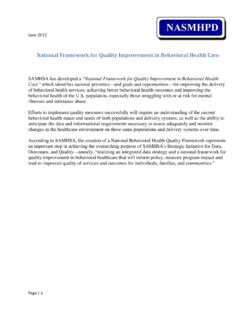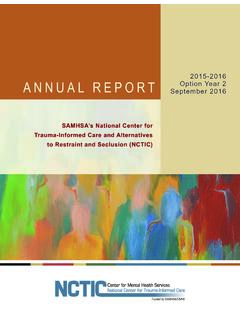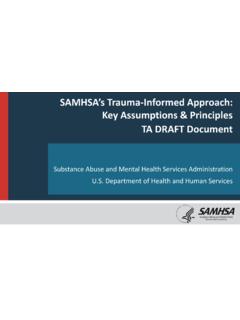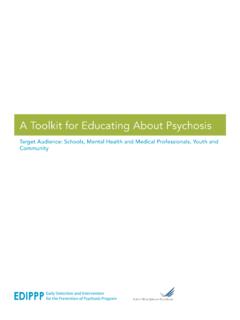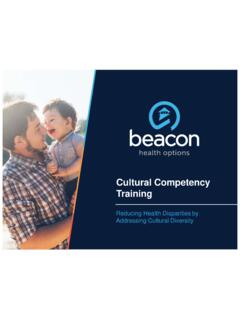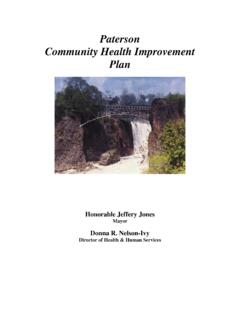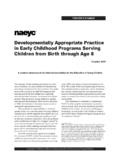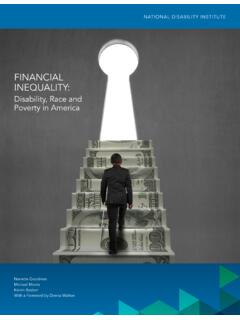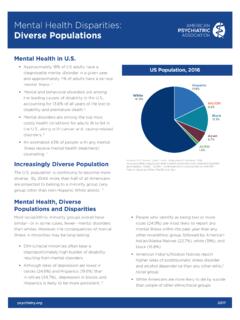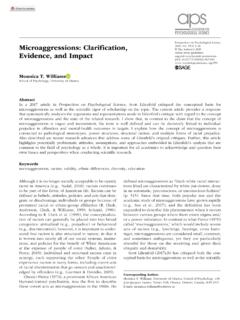Transcription of CULTURE AND TRAUMA IN THIS GUIDE, WE USE THE …
1 CHAPTER. CULTURE AND TRAUMA 5. TRAUMA always happens within a context, and so does SECTION II. CULTURAL CONSIDERATIONS. healing. To understand the impact of TRAUMA means IN THIS GUIDE, WE USE THE. being acutely sensitive to the environment to the FOLLOWING DEFINITION. conditions under which people grew up, to how they OF CULTURE : . live today, and to the journeys they have taken along The shared values, traditions, arts, the way. This chapter provides basic information history, folklore, and institutions of a about how cultural considerations impact the meaning group of people that are unified by race, we make of our experiences and can affect both the ethnicity, nationality, language, religious experience of TRAUMA and the development of peer beliefs, spirituality, socioeconomic status, support We hope to help you become social class, sexual orientation, politics, aware of ways in which your own cultural experience gender, age, disability, or any other may affect your attitudes and behaviors towards others.
2 Cohesive group variable.. We will also explore how assumptions about others Singh, 1995. can affect peer support, and how services sometimes fail women of color, refugees and immigrants, people who live in rural areas, and women viewed as If asked, most people would not identify themselves different because of sexual orientation, religion, as racist or as participants in discrimination. However, or other cultural factors. they may tolerate existing disparities or be passive when witnessing injustice. Recent research suggests Racism and Cultural Biases that about 85% of European Americans hold CULTURE affects every aspect of a woman's life and unconscious aversive biases toward people of color, identity. CULTURE determines views about seeking even though they do not hold overtly prejudiced help: where to go, who to see, what is helpful.
3 The These unconscious beliefs and feelings may assumptions made about CULTURE can become barriers to affect your relationships and interactions with your working effectively in peer support relationships. For peers, who may pick up these feelings even if you example, race can be the most recognizable aspect of a don't! woman's cultural heritage and can set the stage for how Similarly, in the United States, European Americans people work together, but many times the assumptions and men experience white privilege and male we make about race are wrong. privilege benefits and advantages that result strictly from their social status. In her article, White Privilege: Unpacking the Invisible Knapsack, Peggy We don't see things as they are, McIntosh identifies over twenty ways in which she has benefited from white privilege.
4 Regardless of your we see things as we are. cultural background, you may have benefited from an Anais Nin education, from having a steady job, or from having other forms of advantage. People who have always been in a favored position whether it comes from As a peer supporter, it is important to look at your own gender, race, education, money, high-status jobs, or attitudes and behaviors. We all have stereotypes and position within a group may assume that they can misinformation about groups different from our own. It do what they want without interference, and that the is common for these stereotypes to influence the work systems, structures, and rules of society are there to we do and the judgments we make about people. support them. Most people have some mix of privilege and disadvantage. 1 Many of the concepts in this chapter are drawn from work by Cathy 2 Brown, (2009).
5 Cultural competence. In Cortois & Ford Cave of Advocates for Human Potential. Some of her work can be (Eds.), Treating Complex Traumatic Stress Disorders. An Evidence Based found at Guide. New York, NY: Guilford Press. CHAPTER 5. CULTURE AND TRAUMA / PAGE 25. LAVERNE'S STORY. I am sure that the constant bullying I experienced in elementary and junior high school had something to do with the onset of my depression. I was part of the first group of african American students to be bussed out to predominantly white schools. I was placed in classes for the intellectually gifted and was almost always the only brown face in the class. I felt so isolated. The white kids did not want to sit next to me and often made remarks about the color of my skin while the african American students called me an Oreo. I was frequently harassed and beat up on the bus.
6 Things got so bad that at the age of 8, my parents and I decided it would be safer for me to take public transportation to and from school. This only added to my isolation and increased the bullying. I became increasingly isolated, and I don't think that my parents or the schools knew how to support me. I gave up trying to get protection from the bullying and retreated into my own little world. I think that's when I first started to think that the world would be better off without me, and starting thinking the dark thoughts that would become full blown depression in college. Healing from bullying has been an ongoing process. I still sometimes feel out of place, regardless of where I am or who I am with. Reading about others who have overcome adversity and writing poetry were very healing. I learned that I was not alone and that there were other ways to connect with my thoughts and feelings.
7 Finding a peer group has also been important. The unconditional love and support I get from my peers has made me feel more accepted. They reach out to me even before those dark periods come several peers just check in knowing that I am very unlikely to check in with them when I get down. LaVerne Miller, Esq. Often, because people have grown up with certain the guiding principles of peer support. It is important advantages, they forget that they have Our to be able to say, I can't do this right now, and just position in groups and in society can create filters as important to return when you can to discuss the that determine how we see the world. challenge. Acknowledging your own advantages and recognizing racial or other cultural biases may be difficult or feel Community Perspectives shameful, but having honest conversations about these We know from the research discussed in Chapter 1.
8 Issues can help you to build effective peer support that the impact of TRAUMA and toxic stress accumulate relationships. This is particularly important when over time, affecting every aspect of an individual's working with TRAUMA survivors, who are often skillful life. Violence and TRAUMA have similar effects on at detecting dishonesty and who have good reason to communities. In order to understand the experience be attuned to issues of power and authority. Also, it of the women you support, it is critical to understand is essential that you recognize any areas that create a the communities they grew up in, as well as the sense of powerlessness in you, whether they are related communities they currently call home. to TRAUMA or to discrimination. Topics that touch on your own history with oppression can be particularly Historical TRAUMA challenging.
9 Maria Yellow Horse Brave Heart, a pioneer in the field, As a peer supporter, failure to recognize when defines historical TRAUMA as: Cumulative emotional you are acting from a position of power, or feeling and psychological wounding over the lifespan and powerless even though you have authority, can make across generations, emanating from massive group you ineffective and may cause you to do harm to TRAUMA . As a peer supporter, it is important to others in your peer support relationships. Your anger, recognize that the people you work with may carry frustration, or hurt may affect your ability to think deep wounds from things that happened to their people, clearly, stay respectful towards others, and act within rather than or in addition to what happened to them as individuals. 3 Robinson, M. Frost, D., Buccigrossi, J.
10 , & Pfeffer, C. (2003). Gender, Power and Privilege. Rochester, NY: wetWare, Inc. PAGE 26 / CHAPTER 5. CULTURE AND TRAUMA . Many groups have a legacy of historical TRAUMA . In addition to Native Americans, families of Holocaust survivors, and descendants of enslaved Africans, many HISTORICAL TRAUMA . cultural groups carry historical TRAUMA either from IN AMERICAN INDIAN/. violence in their home countries or from what happened ALASKAN NATIVE COMMUNITIES. to them when they arrived here. For example, there are This agency forbade the speaking of 24 Asian and 19 Pacific Islander ethnic groups in the Indian languages, prohibited the conduct United States, each with a unique history. Southeast of traditional religious activities, outlawed Asians often arrived as refugees; Japanese-Americans traditional government, and made Indian may have been incarcerated in internment camps during people ashamed of who they were.





